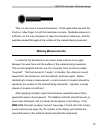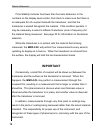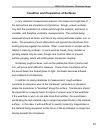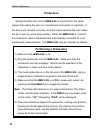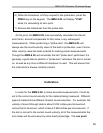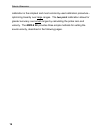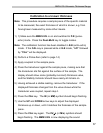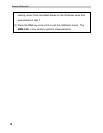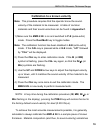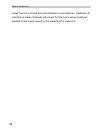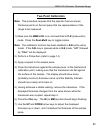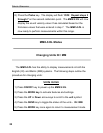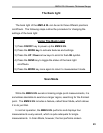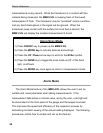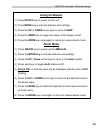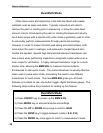
MMX-6 DL Ultrasonic Thickness Gauge
19
Calibration to a known velocity
Note: This procedure requires that the operator know the sound-
velocity of the material to be measured. A table of common
materials and their sound-velocities can be found in Appendix C.
1) Make sure the MMX-6 DL is on and switched to P-E (pulse-echo)
mode. Press the Dual-Multi key to toggle modes.
Note: The calibration function has been disabled in E-E (echo-echo)
mode. If the CAL key is pressed while in E-E mode, “nO” followed
by “CAL” will be displayed.
2) Press the CAL key to enter calibration mode. If the IN (or MM)
symbol is flashing, press the CAL key again, so that the IN/µs (or
M/s) symbols are flashing.
3) Use the UP and DOWN arrow keys to adjust the displayed velocity
up or down, until it matches the sound-velocity of the material to be
measured.
4) Press the CAL key once more to exit the calibration mode. The
MMX-6 DL is now ready to perform measurements.
NOTE: At any time during the calibration procedure (IN, MM, IN/µs, or
M/s flashing in the display), pressing the PRB-0 key will restore the tool to
the factory default sound-velocity for steel (0.233 IN/µs).
To achieve the most accurate measurements possible, it is generally
advisable to always calibrate the MMX-6 DL to a sample piece of known
thickness. Material composition (and thus, its sound-velocity) sometimes



